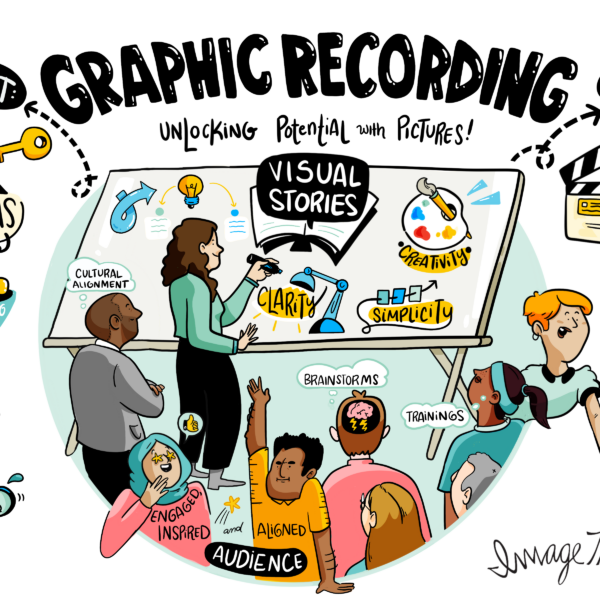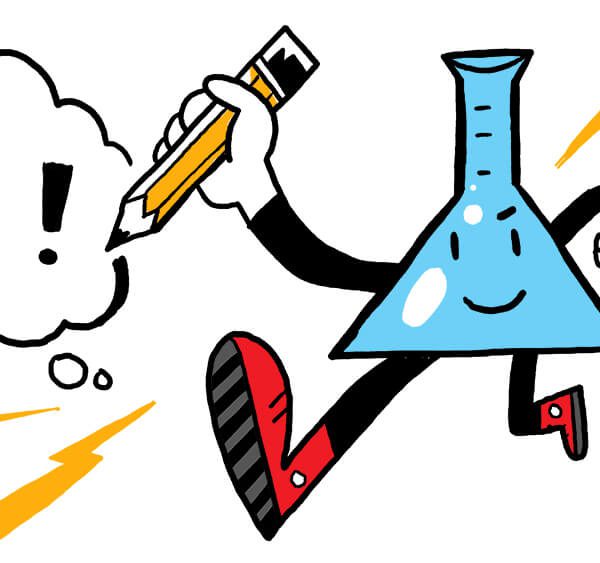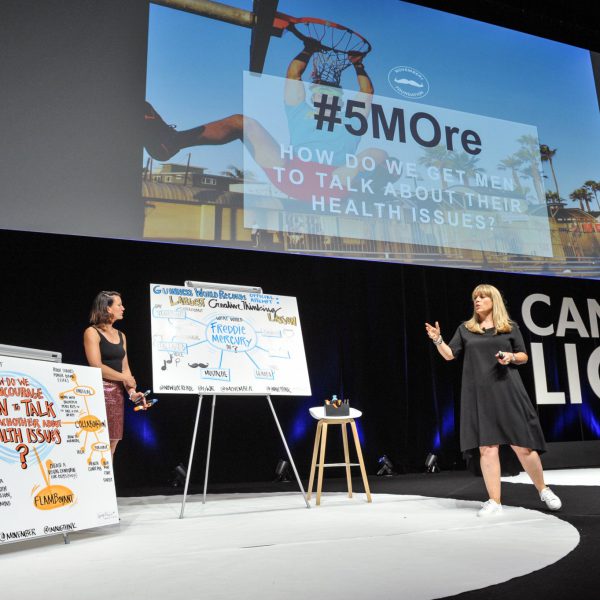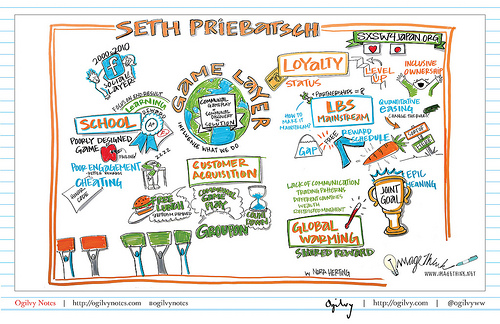What Does ImageThink Do?
Whether you’re new to the world of visual meetings and graphic recording, or you’ve been in the game for a while, there are a lot of terms to keep straight, with new designations being created every year. It’s a fast-growing industry, and one that is becoming increasingly stratified as the wider world recognizes the value of visuals.
If you’re on the ImageThink website, chances are you’ve run into words like graphic recording, graphic facilitation, scribing, sketchnoting, whiteboarding, visual facilitator, live illustrator. All descriptive terms, and all relatively explanatory, however, it can be overwhelming.
ImageThink appreciates that investing in a visual partner for your most important events is a big commitment. We want to make sure that you know what you’re getting, get what you want, and choose the right partner.
To that end, below, we’ve created a glossary to help you navigate the sometimes inky black waters of visual communication. Terms of Art:
What is Graphic Recording?

A cornerstone of ImageThink’s visual practice, graphic recording describes visual note-taking during a meeting on large scale paper, foam core, or digital tablet. Our graphic recorders listen and synthesize the biggest ideas in a meeting, and create visual icons to represent them, mapping them out in two dimensional space in real time. Graphic recording is more passive than graphic facilitation, and is primarily focused on capturing and illustrating the biggest ideas in a way that is easily readable by attendees and triggers memories of a discussion.
What is Graphic Facilitation?
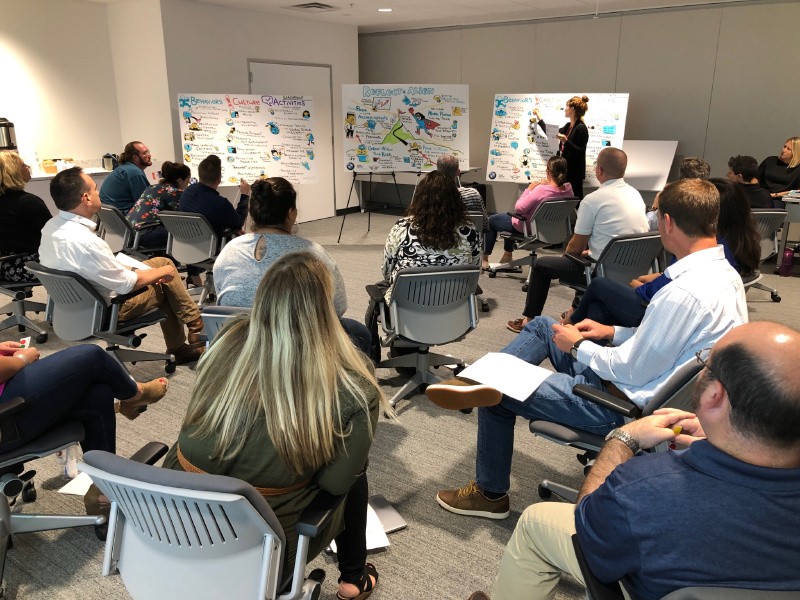
A related service that requires many of the same skills of graphic recording, graphic facilitation refers to using visuals to lead a meeting. Graphic facilitators will often use flipcharts, whiteboards, foam core boards, or large sheets of paper taped to walls to guide the discussion, encourage participation, and inspire creativity in attendees. Graphic facilitators also take responsibility for designing the agenda, managing the clock, and steering the discussion. Graphic facilitation is more about actively pursuing a goal and generating ideas rather than listening for insights or collecting data.
What is Whiteboarding?
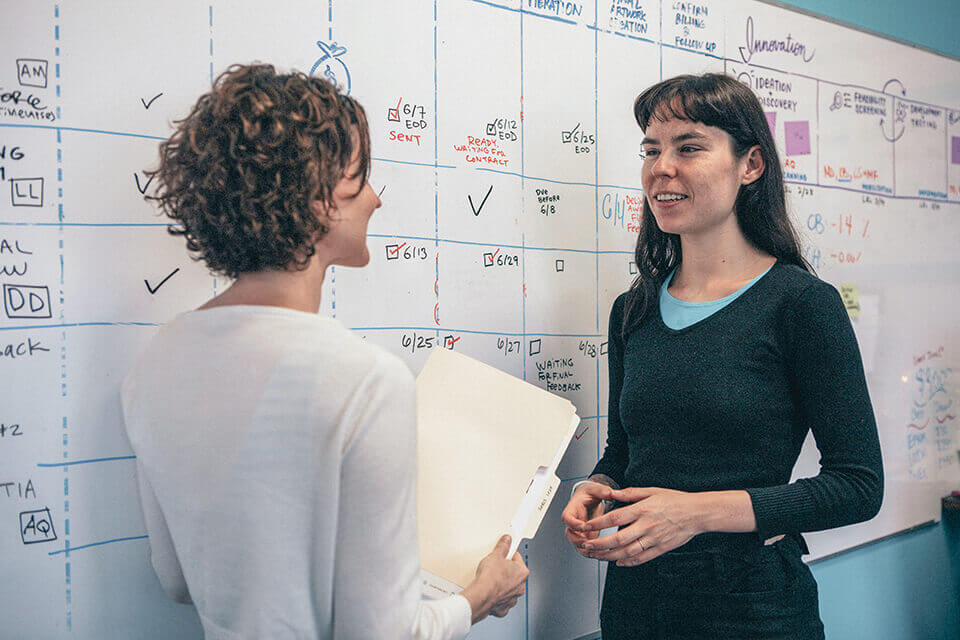
You’re likely familiar with this one, but whiteboarding is the most common way our clients have already experienced communicating ideas visually. Impermanent, fast, and inexpensive, whiteboarding can be a powerful tool for even the most inexperienced and “least artistic” of us out there. As we often teach in our creativity workshops, getting people on their feet and moving activates a different part of the brain, which inspires creativity, boosts energy, and ties ideas to physical memory as well. And if you can draw a square, a circle, and a line, you can communicate a ton of ideas in fun visual ways.
What is Scribing?
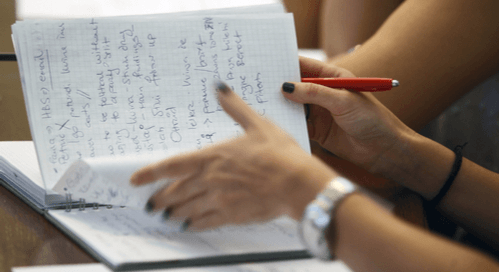
While increasingly used interchangeably with graphic recording (nobody said there wouldn’t be gray areas), scribing more traditionally refers to using the written word to document a meeting. Similar to a courtroom stenographer, the goal of a meeting scribe is to take down detailed minutes of a discussion which can be later be summarized, typed up and distributed to attendees, as well as serve as a more literal record of what was said. That said, you’ll often encounter the term scribing to describe what graphic recorders do – it’s always advisable to clarify before you buy.
What is Sketchnoting?
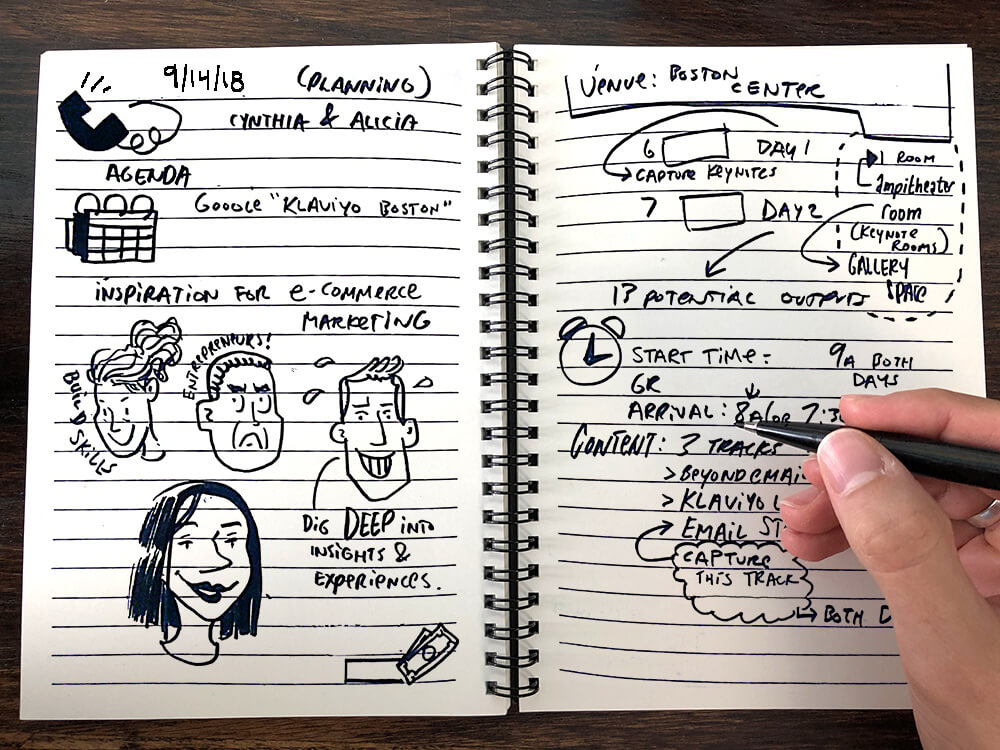
Also thrown around in connection with graphic recording, sketchnoting takes the same idea of combining pictures and words to visually capture ideas, and shrinks it down to a more personal scale. While professional sketchnoters can use their skill to share their ideas and key takeaways with others, usually, sketchnotes are an individual memory device, and a way for visual learners to quickly imprint and internalize ideas, next-steps, and complex processes. (For many people, even non-artists, sketchnoting is a great way to help focus and pay attention to an otherwise dry meeting, so don’t be offended if you see someone doodling during your presentation.)
What is a strategic visual?

Think of strategic visuals like an infographic. Created to convey complex data sets or statistics in a readable, aesthetically pleasing, and even entertaining way, we create strategic visuals in studio as a way to summarize the big ideas that came out of multiple sessions, or as a way to help our clients distill lots of information into an easy to read format. The best strategic visuals lay the data out in a visual narrative, a singular illustration that tells a story and leads the viewer through your observations to the desired conclusion.
Other Definitions Related to Graphic Recording
Beyond the big differences we’ve outlined above, below are a few words, services, or tools you may encounter when looking for a partner.
- Wacom Cintiq – a Digital Tablet and screen that illustrators and graphic recorders use to draw directly on screen using a stylus. More and more, the iPad Pro is becoming the de facto tool for digital work.
- ImageBoards – The outputs from your event, when traditionally graphic recorded with markers, ImageBoards are large, often 40” x 60” foam core white boards that can be mounted on a wall, displayed on an easel, or photographed and digitized. These days, ImageBoards are more often created natively digital and can be scaled to any size or format.
- Social Listening Activations – Sometimes called living murals, or experiential drawing, these large installations pose a question to an audience, and graphic recorders illustrate answers, and serve as a form of public survey, feedback gathering tool that participants enjoy interacting with.
Hopefully, the definitions and examples above will help you wade into the world of graphic recording with more confidence. Armed with your new knowledge, we wish you the best in your search for the right visual solution.
Whatever your need, call us at 347-735-9620 or schedule a call to go over any questions. Our team is happy to offer a free consultation in advance of your next meeting or event to discuss how you can leverage graphic recording (or any of the items above) to maximize your creativity!
